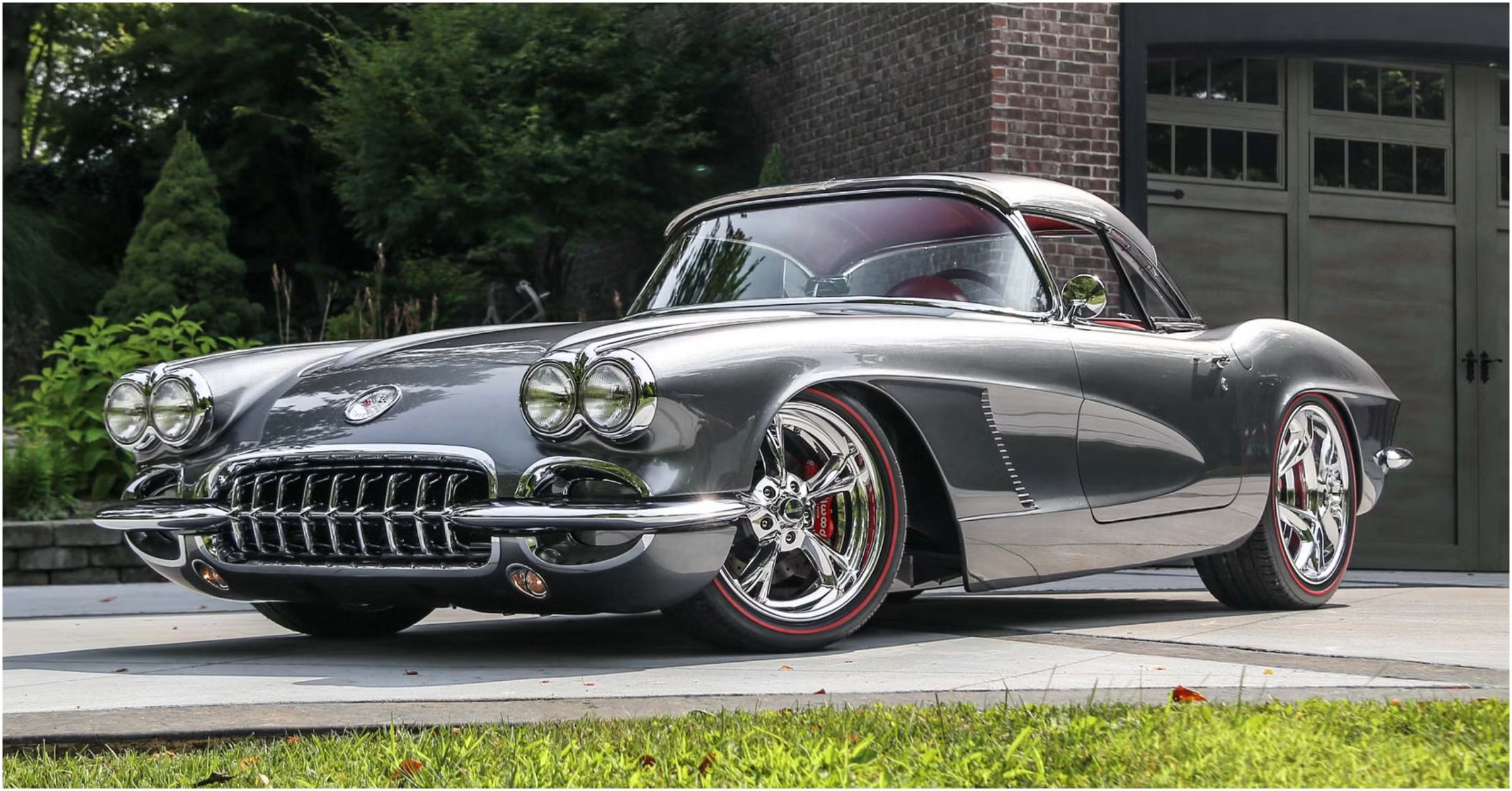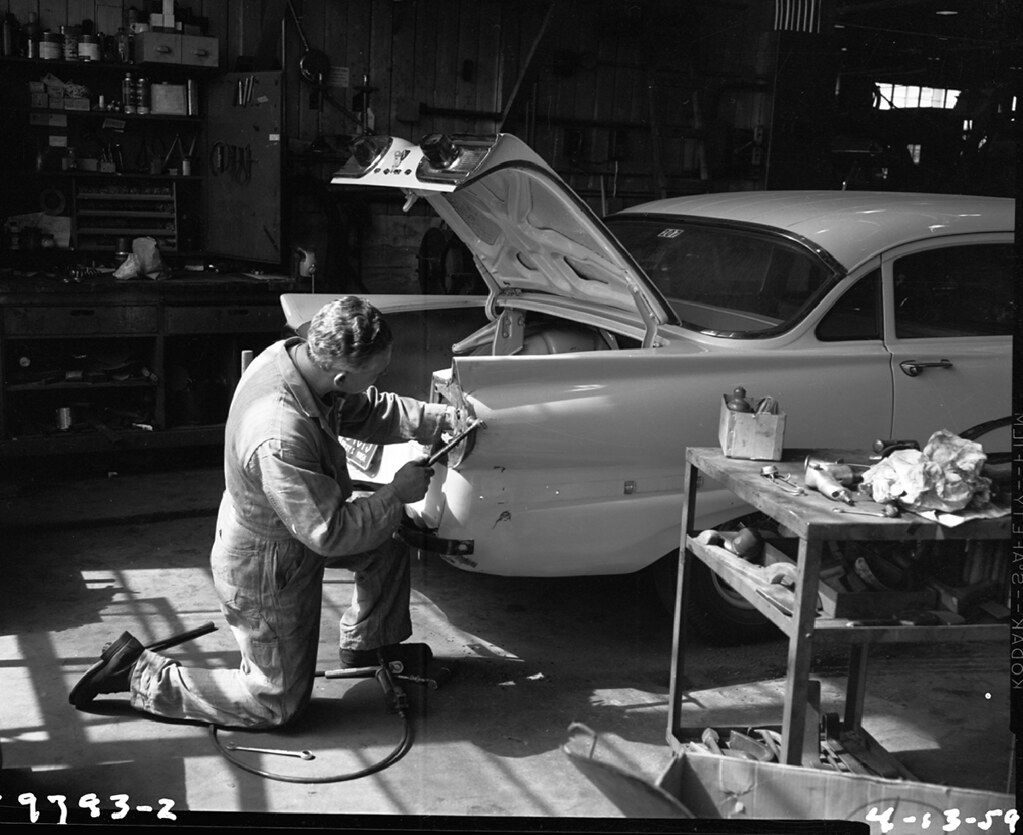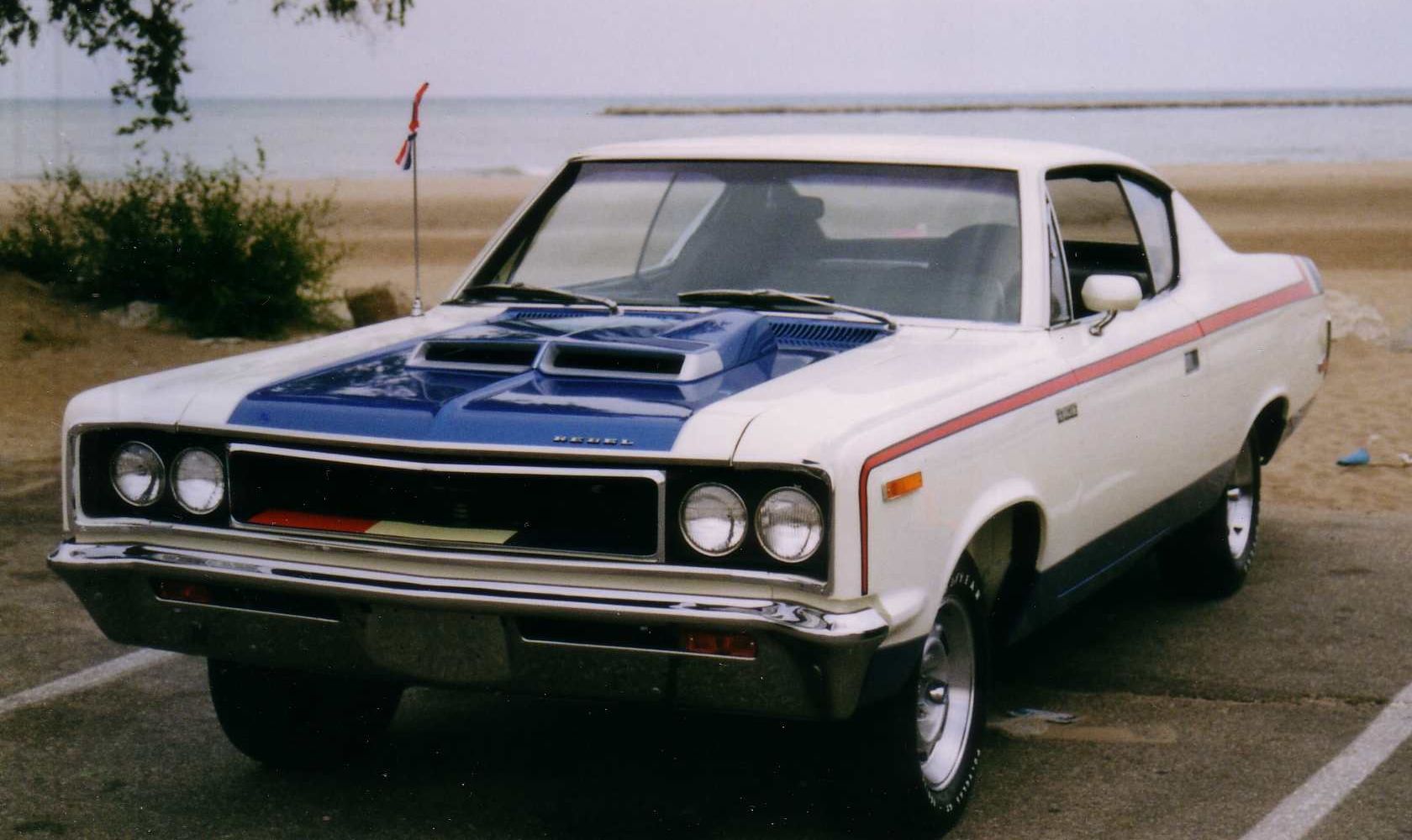
When we hear the wild tales of driving from ‘back in the day,’ it’s easy to be skeptical. Did your uncle truly outrun the cops in a cloud of tire smoke? Perhaps your buddy’s convertible didn’t quite land him as many dates as his endless stories suggest. Yet, the 1970s were a genuinely different era, a time when such legends could very well have been rooted in reality, a period defined by muscle cars that possessed power beyond belief.
This was an age where no one batted an eye at the sheer volume of gas consumed during a glorious burnout. The soundtrack of the open road was a symphony of roaring V8s, the exhilarating chirp of tires, and, on occasion, the unmistakable shriek of pure terror. These 1970s muscle cars weren’t just vehicles; they were barely restrained beasts, metal manifestations of raw power that demanded not just attention and respect, but also, quite frequently, a fresh set of bias-ply tires after every oil change.
Fast forward to today, an era where our vehicles are brimming with omnipresent lane-keep assist, the whisper-quiet hum of electric torque, and cabins meticulously designed for therapy sessions rather than adrenaline-fueled escapades. Against this backdrop, the snarling monsters born from American muscle’s glory days often appear to be, quite frankly, a bit too much car for the average latte-sipping motorist. We’re talking about raw, unfiltered horsepower, delivered with minimal safety nets, and imbued with quirks that feel less like charming character traits and more like active attempts at sabotage. For drivers accustomed to digital dashboards and self-parking features, navigating these machines would be an exercise in utter bewilderment. So, brace yourselves, because we’re diving into 15 ’70s muscle cars that would leave today’s drivers crying into their oat milk lattes, if they could even get them out of the Starbucks drive-thru without a collision.

1. **1970 Plymouth Hemi ‘Cuda**The 1970 Plymouth Hemi ‘Cuda was Detroit’s emphatic answer to a simple question: “How much overkill can we possibly cram into a mid-size chassis?” The result was nothing short of ridiculous, featuring a monstrous 426 cubic-inch (7.0L) HEMI V8. Officially rated at a staggering 425 horsepower and 490 lb-ft of torque, this engine was widely whispered to produce closer to 500 hp in real-world conditions, making it an absolute powerhouse.
This was a car meticulously engineered to dominate the drag strip, a quarter-mile king designed for straight-line ferocity. However, unleash it upon public roads, and it transformed into something else entirely: a caffeine-addicted tank that clearly skipped leg day. The non-power-assisted recirculating ball steering offered inputs that were more akin to vague suggestions than precise commands, while the drum brakes, or even the optional, marginally better, power discs, served as mere polite suggestions to slow down, often requiring a leap of faith to bring 3,600 pounds of angry Mopar to a halt.
Adding to the challenge, the rear tires seemed to constantly beg for mercy, a direct consequence of the solid axle and minimal suspension compliance. Today’s average driver, thoroughly coddled by the seamless torque maps of electric vehicles and an armada of sophisticated driver assists, would likely find themselves wrapping this untamed machine around a light pole well before they even managed to locate the turn signal stalk. It was a raw, visceral experience that demanded absolute attention and respect.
Car Model Information: 2022 Mazda CX-5 2.5 S Premium
Caption: 1970 Hardtop Coupe
Name: Plymouth Barracuda
Manufacturer: Plymouth (automobile)
Production: 1964–1974
Assembly: Fenton, Missouri,Hamtramck, Michigan,Maywood, California,Windsor, Ontario
Layout: Front-engine, rear-wheel drive layout
Class: Pony car
Categories: 1970s cars, All articles with dead external links, All articles with unsourced statements, Articles with dead external links from February 2018, Articles with dead external links from January 2022
Summary: The Plymouth Barracuda is a two-door pony car that was manufactured by Chrysler Corporation from 1964 through 1974 model years.
The first-generation Barracuda was based on the Chrysler A-body and was offered from 1964 until 1966. A two-door hardtop (no B-pillar) fastback design, it shared a great majority of parts and bodywork with the Plymouth Valiant, except for the distinctive wraparound rear glass.
The second-generation Barracuda, though still Valiant-based, was heavily redesigned. Built from 1967 through 1969, it was available as a two-door in fastback, notchback, and convertible versions.
The third generation, offered from 1970 until 1974, was based on the Chrysler E-body, exclusive to it, and the slightly larger Dodge Challenger. A completely new design, the two-door Barracuda was available in hardtop and convertible body styles.
Get more information about: Plymouth Barracuda
Buying a high-performing used car >>>
Brand: Plymouth Model: Hemi ‘Cuda
Price: $25,680 Mileage: 32,780 mi.
Read more about: Unearthing the Gems: 14 Rare Cars of the 1970s That Defined an Era of Power and Panache
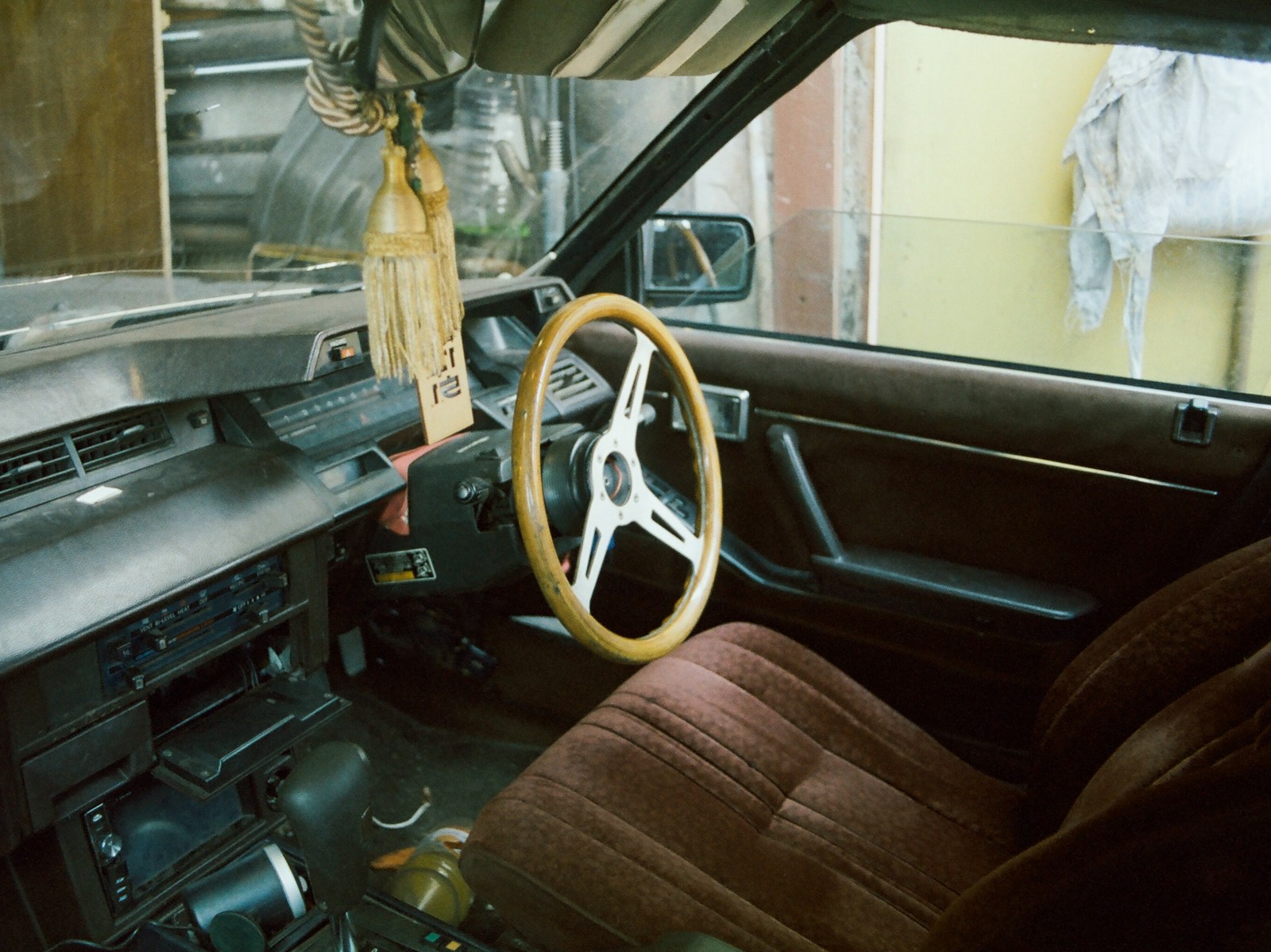
2. **1971 Ford Mustang Boss 351**The 1971 Ford Mustang Boss 351 might have arrived a bit late to the raucous muscle car party, but it certainly made its presence known, bringing serious hardware that screamed, “I didn’t come to make friends.” Beneath its aggressive hood lay a high-winding, solid-lifter 351 cubic-inch (5.8L) Cleveland V8. This engine, officially rated at 330 hp, was notorious for producing significantly more power than its stated figures, making it a formidable contender.
This Boss engine loved to rev high, demanding constant attention from the driver, and it made you truly earn every single shift through its mandatory 4-speed manual transmission. Power steering was an option, though purists rarely chose it, and air conditioning was practically a fantasy in this performance-focused machine. The car’s heavy front end combined with its notoriously twitchy rear punished any momentary lapse in driver focus, transforming even minor errors into significant adventures.
Consider the sheer effort involved: forget about attempting to parallel park this beast in a crowded Starbucks lot; if your arms miraculously don’t give out after wrestling that unassisted steering wheel, your nerves most certainly will. This was, unequivocally, a driver’s car, one that demanded immense respect and formidable skill, not a comfortable cruiser designed for scrolling through social media. There’s a widely known reason why even the Boss Mustang featured in the John Wick films is a replica—it’s understood that not even the world’s greatest hitman could pilot an actual Boss without accumulating a few scratches along the way.
Car Model Information: 2022 Mazda CX-5 2.5 S Premium
Name: Mustang (first generation)
Caption: 1965 Ford Mustang
Aka: Ford T5 (Germany)
Manufacturer: Ford Motor Company
Assembly: Unbulleted list
Production: March 1964 – June 1973
ModelYears: 1965–1973
Class: Unbulleted list
BodyStyle: Unbulleted list
Layout: Front-engine, rear-wheel drive layout
Designer: Gale Halderman
Related: Unbulleted list
Successor: Ford Mustang (second generation)
Categories: 1970s cars, All Wikipedia articles written in American English, All articles with unsourced statements, Articles with short description, Articles with unsourced statements from January 2020
Summary: The first-generation Ford Mustang was manufactured by Ford from March 1964 until 1973. The introduction of the Mustang created a new class of automobiles known as pony cars. The Mustang’s styling, with its long hood and short deck, proved wildly popular and inspired a host of competition.
It was introduced on April 17, 1964, as a hardtop and convertible, with the fastback version following in August 1964. Upon introduction, the Mustang, sharing its platform with the Falcon, was slotted into the compact car segment.
The first-generation Mustangs grew in overall dimensions and engine power with each revision. The 1971 model featured a drastic redesign. After an initial surge, sales steadily declined, and Ford began working on a new generation Mustang. With the onset of the 1973 oil crisis, Ford was prepared, having already designed the smaller Mustang II for the 1974 model year. This new car shared no components with preceding models.
Get more information about: Ford Mustang (first generation)
Buying a high-performing used car >>>
Brand: Ford Model: Mustang Boss 351
Price: $25,680 Mileage: 32,780 mi.
Read more about: Unleash the Roar: 14 Badass Golden Era Muscle Cars You Can Still Own Without Breaking the Bank
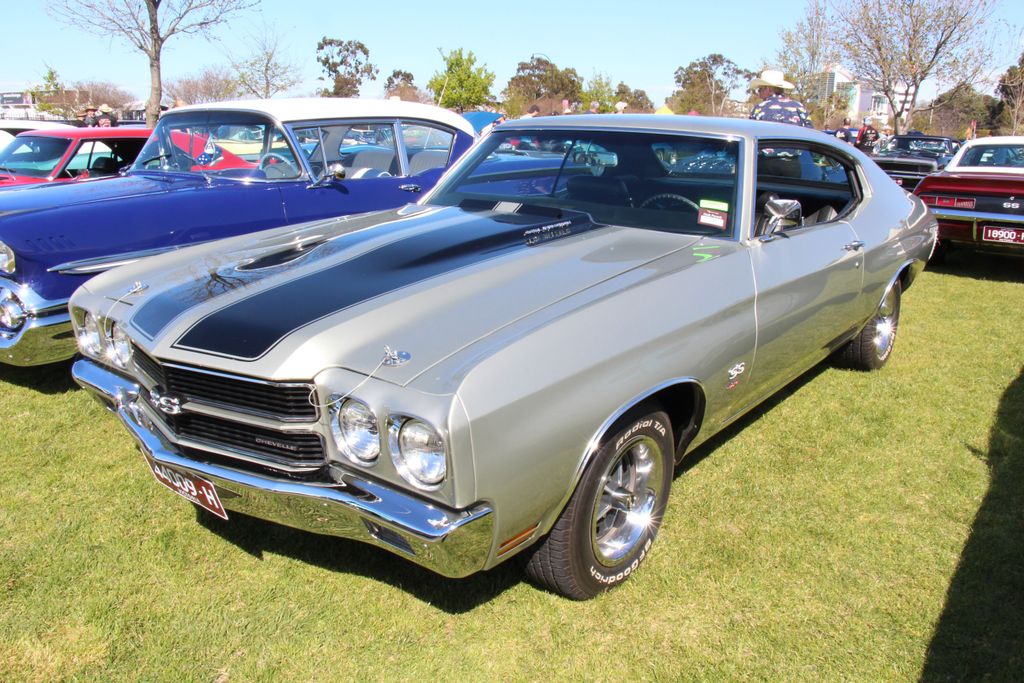
3. **1970 Chevrolet Chevelle SS 454 LS6**Arguably one of the meanest, most unapologetic muscle cars ever unleashed from the heart of Detroit, the 1970 Chevrolet Chevelle SS 454 LS6 was a true force of nature. It packed a massive 454 cubic-inch (7.4L) big-block V8, officially rated at a brutal 450 horsepower and an earth-shattering 500 lb-ft of torque. This engine possessed the kind of ferocity that could seemingly alter time zones in a straight line, making the car frighteningly fast in a sprint.
However, its straight-line prowess was dramatically offset by its utterly terrifying behavior in the corners. The car’s live rear axle and basic leaf spring suspension were completely outmatched by the sheer power of the engine, a combination that frequently led to chronic wheel hop and notoriously unpredictable behavior under hard acceleration. Attempting to brake from highway speeds was less a controlled deceleration and more an act of desperate faith, relying on marginal power discs up front and primitive drums out back.
For most modern drivers, who are accustomed to the reassuring embrace of computerized stability and advanced braking assists, they would likely chicken out long before even attempting to tap into half of this car’s available power. The thought of trying to control that violent wheel hop without the seamless intervention of a microchip is enough to make any contemporary motorist break into a cold sweat. This Chevelle demanded a level of driver engagement and skill that has largely vanished from today’s driving experience.
Car Model Information: 1969 Chevrolet Chevelle SS
Name: Chevrolet Chevelle
Caption: 1970 Chevrolet Chevelle SS 396 Sport Coupe
Manufacturer: Chevrolet
Production: 1963–1977
ModelYears: 1964–1977
Class: Mid-size
Platform: GM A platform (RWD)
Layout: FR layout
Successor: Chevrolet Malibu
Categories: 1970s cars, All articles needing additional references, All articles that may contain original research, All articles with specifically marked weasel-worded phrases, All articles with unsourced statements
Summary: The Chevrolet Chevelle is a mid-sized automobile that was produced by the Chevrolet division of General Motors (GM) in three generations for the 1964 to 1977 model years. Part of the GM A-body platform, the Chevelle was one of Chevrolet’s most successful nameplates. Body styles included coupes, sedans, convertibles, and station wagons. The “Super Sport” versions were produced through the 1973 model year and Lagunas from 1973 through to 1976.
After a four-year absence, the El Camino was reintroduced as part of the new Chevelle lineup in 1964.
From 1964 to 1969, GM of Canada sold a modified version of the Chevelle that included a Pontiac-style grille, and a LeMans instrument panel, marketed as the Beaumont.
The Malibu was the top-of-the-line model to 1972, and completely replaced the Chevelle nameplate starting with the redesigned, and downsized 1978 model year.
Get more information about: Chevrolet Chevelle
Buying a high-performing used car >>>
Brand: Chevrolet Model: Chevelle
Price: $119,550 Mileage: 93 mi.
Read more about: Unleash the Roar: 14 Badass Golden Era Muscle Cars You Can Still Own Without Breaking the Bank
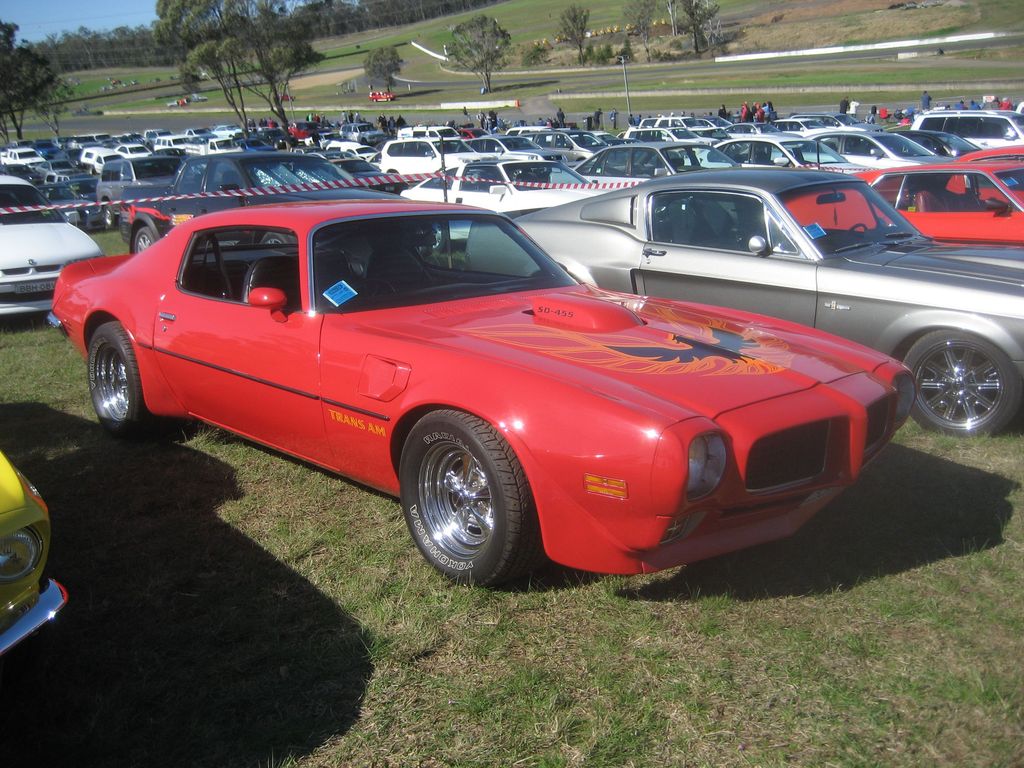
4. **1973 Pontiac Firebird Trans Am SD-455**Don’t allow the iconic screaming chicken decal emblazoned on its hood to mislead you; the 1973 Pontiac Firebird Trans Am SD-455 was a genuine bruiser, a defiant anomaly in an era increasingly overshadowed by looming emissions regulations. Its heart was the formidable Super Duty 455 cubic-inch (7.5L) V8, which, despite being conservatively rated at 290 hp (net), produced an absolutely massive amount of low-end torque, well over 400 lb-ft. This raw power meant it could light up the rear tires with what felt like a mere sneeze on the throttle.
This car was heavy, unapologetically fast, and unbelievably loud—a true sensory assault. Shifting through its four-speed Muncie manual transmission was akin to an Olympic event, requiring strength, precision, and unwavering commitment. The car genuinely seemed to detest being driven gently, always urging the driver to unleash its full, unbridled fury. It was a machine designed for excitement, not subtlety.
In today’s world, where quiet cabins and sophisticated automatic climate control systems are the norm, driving this particular Trans Am feels more like being trapped inside a thunderstorm that’s somehow confined within a gym bag. Furthermore, the visibility was so laughably poor, largely due to that aggressively raked windshield and the massive C-pillars, that you might inadvertently back over your own mailbox without even registering it. This Firebird was loud, it was proud, and it was completely unconcerned with anything resembling driver convenience or modern refinement.
Car Model Information: 1983 Pontiac Firebird Trans Am 2D Coupe
Name: Pontiac Firebird
Caption: The second, third, and fourth generations of,the Pontiac Firebird Trans Am
Manufacturer: Pontiac (automobile)
Production: February 23, 1967 – August 30, 2002
ModelYears: 1967 – 2002
Class: Pony car,Muscle car
Platform: GM F platform
Related: Chevrolet Camaro
Layout: Front engine, rear-wheel-drive layout
Categories: 1970s cars, 1980s cars, 1990s cars, 2000s cars, All articles with dead external links
Summary: The Pontiac Firebird is an American automobile built and produced by Pontiac from the 1967 to 2002 model years. Designed as a pony car to compete with the Ford Mustang, it was introduced on February 23, 1967, five months after GM’s Chevrolet division’s platform-sharing Camaro. This also coincided with the release of the 1967 Mercury Cougar, Ford’s upscale, platform-sharing version of the Mustang.
The name “Firebird” was also previously used by GM for the General Motors Firebird series of concept cars in the 1950s.
Get more information about: Pontiac Firebird
Buying a high-performing used car >>>
Brand: Pontiac Model: Firebird
Price: $22,991 Mileage: 38,257 mi.
Read more about: Beyond the Malaise: 15 Rare American Cars from the 1970s That Defied Expectations
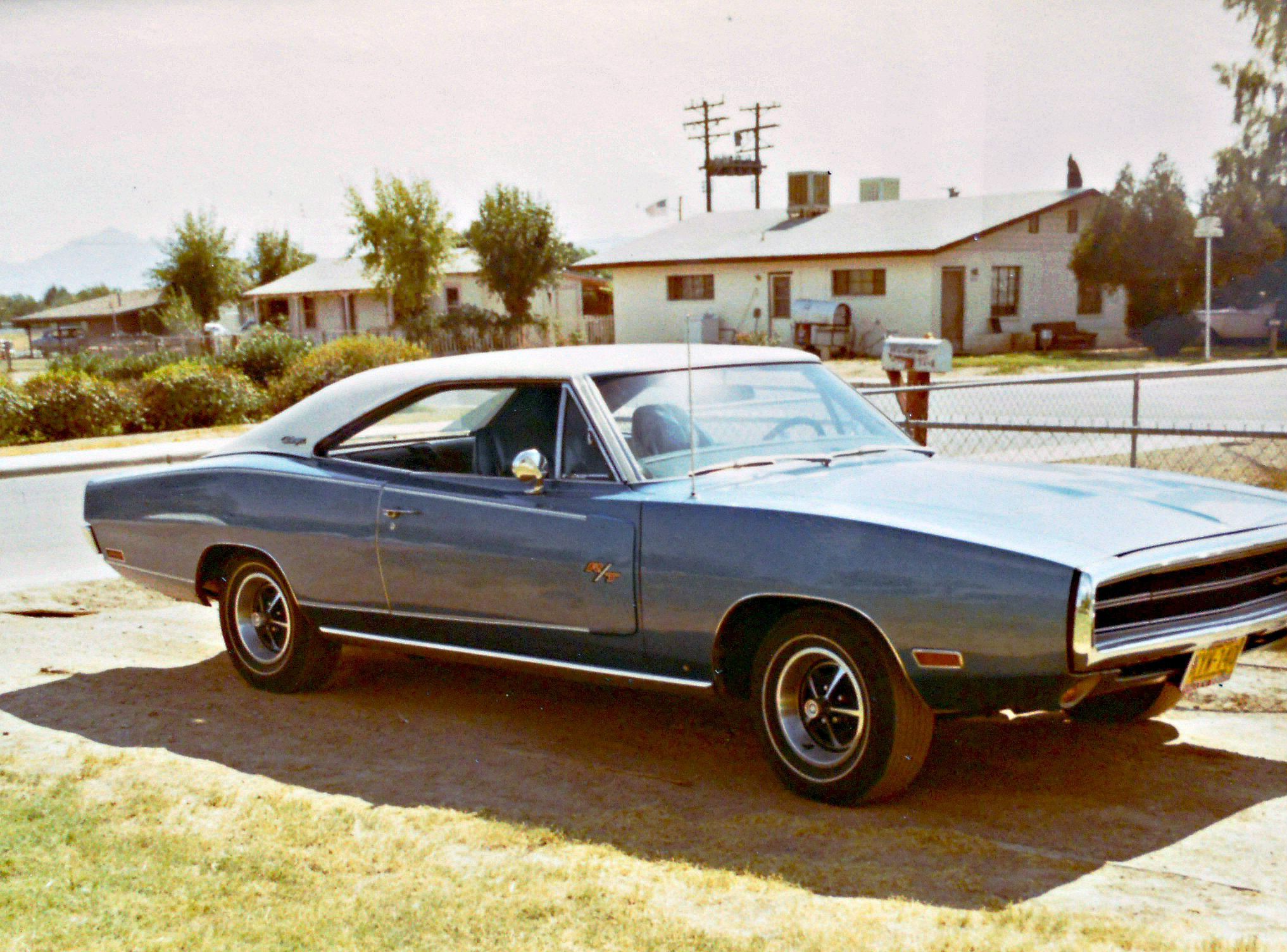
5. **1970 Dodge Charger R/T 440**With its menacing stance and an appetite fed by three Holley 2-barrel carburetors funneling fuel into its potent 440 cubic-inch (7.2L) Magnum V8—rated at 375 hp, or an even more imposing 390 hp with the Six-Pack setup—the 1970 Dodge Charger R/T was less a mere car and more a mobile explosion waiting to happen. It didn’t just look menacing; it acted precisely accordingly, a true embodiment of raw, untamed power.
Its boat-length proportions, stretching over 17 feet long, combined with a laughably terrible turning radius, transformed the simple act of keeping it within lane lines into a constant, white-knuckle challenge for any driver. Modern drivers would undoubtedly struggle mightily with its sheer bulk, the complete absence of any meaningful feedback from its vague steering system, and its genuinely terrifying brakes, which often comprised 10-inch drums all around, with optional power discs that offered only marginal improvements.
Getting this colossal machine up to warp speed was surprisingly easy, a testament to its formidable engine. However, stopping it without a divine intervention or a solid concrete barrier often proved to be an entirely different and far more perilous story. But, for those rare few who possessed the skill and nerve to truly handle it, you could find yourself metaphorically, and perhaps literally, taking on a modern Dodge Demon, a testament to its enduring, terrifying capability.
Car Model Information: 2022 Dodge Charger SXT
Name: Dodge Charger
Caption: 1969 Dodge Charger
Manufacturer: Dodge
Production: 1966–1978,1981–1987,2005–present
ModelYears: 1966–1978,1982–1987,2006–present
Categories: 1960s cars, 1970s cars, 1980s cars, 2000s cars, 2010s cars
Summary: The Dodge Charger is a model of automobile marketed by Dodge in various forms over eight generations since 1966.
The first Charger was a show car in 1964. A 1965 Charger II concept car resembled the 1966 production version.
In the United States, the Charger nameplate has been used on mid-size cars, personal luxury coupes, subcompact hatchbacks, and full-size sedans.
Get more information about: Dodge Charger
Buying a high-performing used car >>>
Brand: Dodge Model: Charger
Price: $22,988 Mileage: 34,013 mi.
Read more about: Unleash the Roar: 14 Badass Golden Era Muscle Cars You Can Still Own Without Breaking the Bank
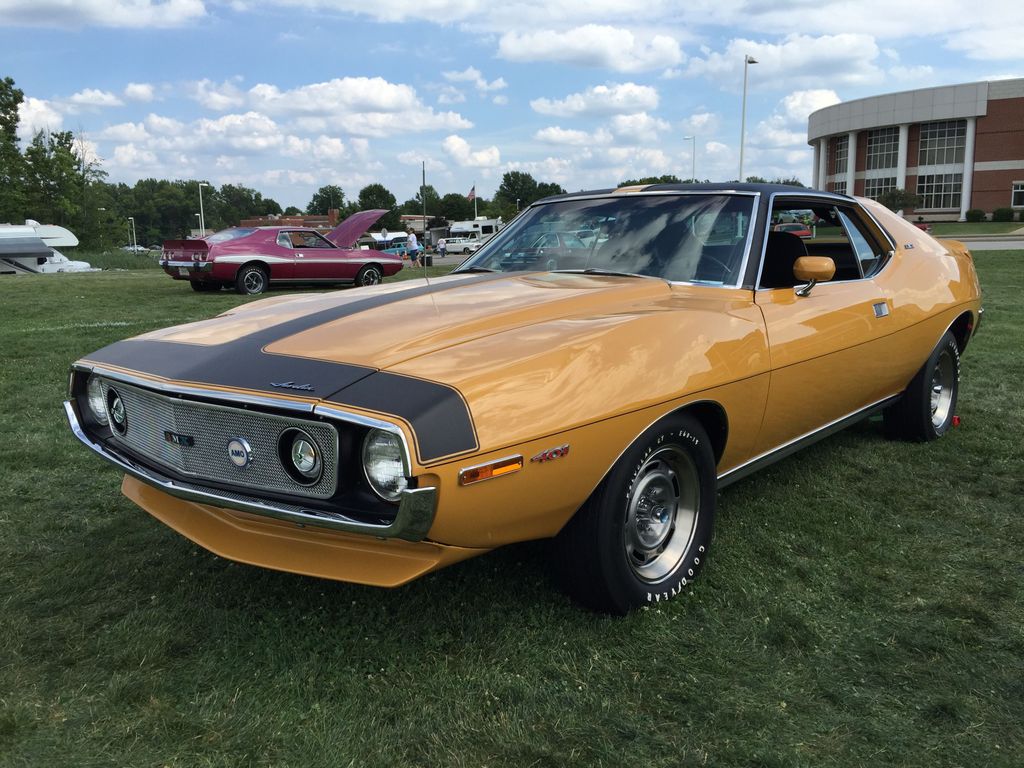
6. **1971 AMC Javelin AMX 401**AMC’s unique, yet undeniably cool, entry into the muscle car fray was the 1971 Javelin AMX 401. It boldly packed a potent 401 cubic-inch (6.6L) V8, rated at a healthy 330 hp, and boasted heaps of personality. However, this personality often manifested as quirkiness, sometimes to a fault. The driving position, for instance, felt as though it had been ergonomically designed for a contortionist, while the dashboard controls appeared to have been laid out by a committee of jazz musicians in the midst of a particularly spirited jam session.
The engine itself was a temperamental hothead, infamous for being finicky and demanding constant attention. Its inherent quirkiness and wild behavior made it seem perfectly suited for the chaotic, apocalyptic world envisioned in films like Furiosa, but decidedly less so for the mundane commute to work in today’s structured traffic. This was a car that, when it ran, ran hard and sounded absolutely glorious, delivering a thrilling experience.
However, the challenge was that it didn’t always want to run, a characteristic that frequently led to frustrated owners and inevitably, frequent visits to mechanics who likely specialized more in agricultural machinery than high-performance cars. Today’s drivers would be utterly bewildered by the strange ergonomics and the constant, almost parental, need for mechanical babysitting. Still, it looked fantastic when parked. Which, more often than not, was precisely where it had chosen to break down.
Car Model Information: 2022 Mazda CX-5 2.5 S Premium
Name: AMC Javelin
Caption: 1971 AMC Javelin SST
Manufacturer: American Motors Corporation
Aka: unbulleted list
Production: 1967–1974
ModelYears: 1968–1974
Assembly: unbulleted list
Designer: Dick Teague
Class: unbulleted list
BodyStyle: hardtop
Layout: Front-engine, rear-wheel drive layout
Platform: AMC’s “junior” cars
Predecessor: Rambler Marlin
Categories: 1970s cars, AMC vehicles, All articles that may contain original research, All articles with dead external links, All articles with unsourced statements
Summary: The AMC Javelin is an American front-engine, rear-wheel-drive, two-door hardtop automobile manufactured by American Motors Corporation (AMC) across two generations, 1968 through 1970 and 1971 through 1974 model years. The car was positioned and marketed in the pony car market segment.
Styled by Dick Teague, the Javelin was available in a range of trim and engine levels, from economical pony car to muscle car variants. In addition to manufacture in Kenosha, Wisconsin, Javelins were assembled under license in Germany, Mexico, Philippines, Venezuela, as well as Australia – and were marketed globally. American Motors also offered discounts to U.S. military personnel, and cars were taken overseas.
The Javelin won the Trans-Am race series in 1971, 1972, and 1976. The second-generation AMX variant was the first pony car used as a standard vehicle for highway police car duties by an American law enforcement agency.
Get more information about: AMC Javelin
Buying a high-performing used car >>>
Brand: AMC Model: Javelin AMX 401
Price: $25,680 Mileage: 32,780 mi.
Read more about: Beyond the Malaise: 15 Rare American Cars from the 1970s That Defied Expectations
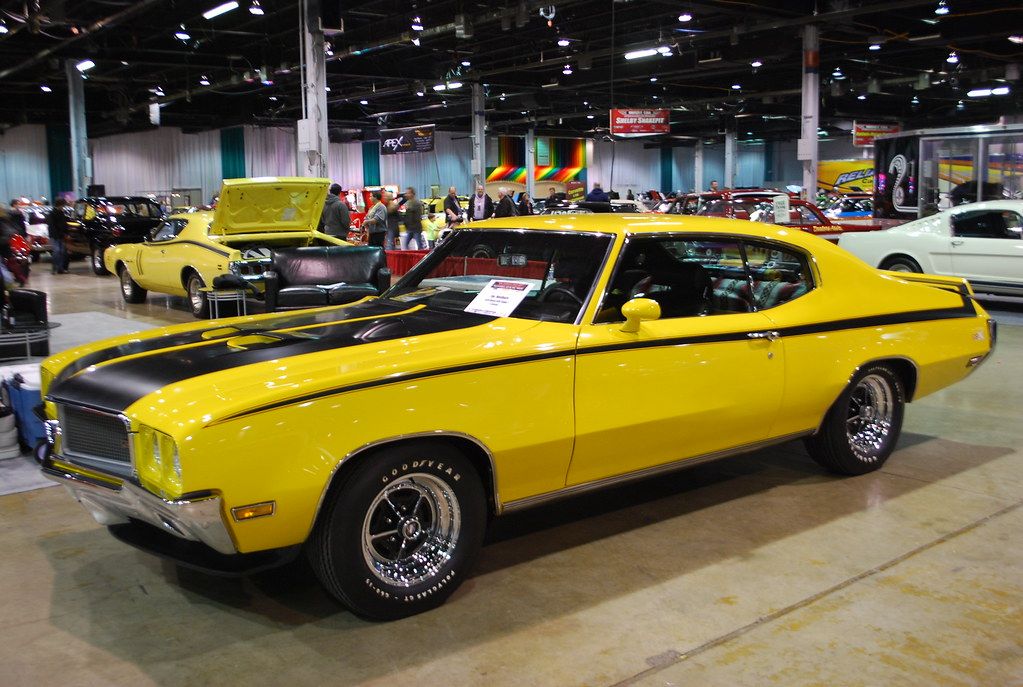
7. **1970 Buick GSX Stage 1**Don’t let the Buick badge lull you into a false sense of sedate luxury; the 1970 Buick GSX Stage 1 was the automotive equivalent of a grandpa who just happened to be wielding a chainsaw. Its heart was a monstrous 455 cubic-inch (7.5L) Stage 1 V8, an engine that delivered a brutal, segment-leading 510 lb-ft of torque, alongside a robust 360 hp. This vehicle was deceptively fast, possessing the ability to launch like a rocket from a standstill, yet its notoriously soft Buick suspension made the experience feel oddly like you were doing it from the plush comfort of a La-Z-Boy recliner.
Drivers accustomed to the razor-sharp inputs and taut chassis dynamics of modern performance vehicles would find themselves utterly lost in the GSX’s floaty, disconnected response and its massive body roll during cornering. The sensation of driving was less about precise control and more about a general direction. And yes, they’d probably waste precious moments in traffic attempting to figure out how to Bluetooth their smartphone to what was, for all intents and purposes, an 8-track player. This was a car built for raw, effortless grunt and immediate, overwhelming power, not surgical precision or digital connectivity.
The GSX Stage 1 embodied a bygone era of muscle, where sheer displacement and brute force reigned supreme over nuanced handling or technological amenities. It was a comfortable way to go ludicrously fast in a straight line, but a challenging one to control when the road began to curve. The power was intoxicating, but the ride was undeniably plush, creating a unique paradox that only the 1970s could truly deliver.
Having just scratched the surface of the untamed beasts of the 1970s, it’s clear that the era was defined by machines that demanded respect, skill, and a healthy dose of fear. These weren’t just cars; they were extensions of a driver’s will, raw and unfiltered, with very few electronic nannies to soften the blow of a heavy right foot or a misjudged corner. We’ve explored some of the most infamous straight-line warriors and corner-phobic monsters. Now, prepare yourselves for another deep dive into the heart of American muscle, as we unveil even more legendary and often overlooked machines from the ’70s.
These next eight vehicles embody the same terrifying power delivery and unique quirks that would make any driver accustomed to contemporary automotive expectations break out into a cold sweat. Each one tells a story of an era where horsepower was king, and driver aids were a distant dream. From the deceptively balanced to the utterly obscure, these are the muscle cars that would still push today’s drivers to their absolute limits, proving that true power isn’t about effortless comfort, but about raw, visceral engagement.
Read more about: Unearthing Automotive Legends: 14 of the Rarest American Muscle Cars That Command the Roads
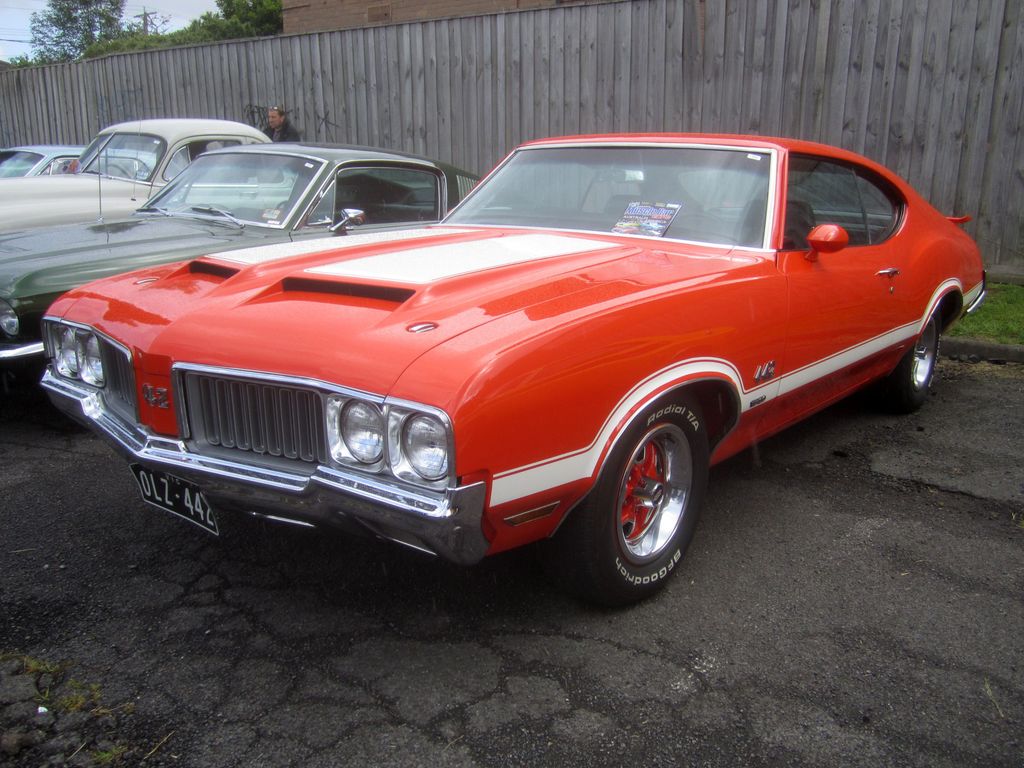
8. **1970 Oldsmobile 442 W-30**The 1970 Oldsmobile 442 W-30 is often regarded as the “gentleman’s street fighter,” a car that, by 1970 standards, was surprisingly refined and well-mannered. However, let’s be entirely realistic: this perceived “balance” would still translate into unadulterated chaos for anyone stepping out of a modern vehicle. Beneath its subtly aggressive lines was a mighty 455 cubic-inch (7.5L) V8, churning out a stout 370 horsepower and a monumental 500 lb-ft of torque. This meant your rear tires could quite literally vanish in a cloud of smoke with just a single, aggressive press of the throttle.
In an era devoid of traction control or anti-lock braking systems, engaging in any form of “spirited” driving with the W-30 became a high-stakes gamble against the very laws of physics. While its suspension was indeed tauter than some of its rivals, it still relied on a solid rear axle that would bounce like a beach ball over anything less than billiard-table smooth pavement, making high-speed stability a constant battle. The recirculating ball steering was slow and vague, requiring multiple turns just to navigate a parking lot, turning simple maneuvers into an exercise in patience.
Furthermore, the brakes were barely adequate for halting such a significant mass, particularly the rear drums, which were notorious for fading faster than your faith in its handling during prolonged stops. Attempting to back this grand machine into a parking space, armed with tiny mirrors and an immense turning radius, would guarantee a multi-point turn spectacle that would frustrate even the calmest of contemporary drivers. Yet, the glorious roar from its exhaust nearly made the potential dents seem worth the risk.
Car Model Information: 1969 Oldsmobile 442
Name: Oldsmobile 442
Manufacturer: Oldsmobile
ModelYears: 1964–1980,1985–1987,1990–1991
Class: Muscle car
Layout: FR layout
Caption: 1971 Oldsmobile 442
Categories: 1960s cars, 1970s cars, 1980s cars, All articles with unsourced statements, Articles with short description
Summary: The Oldsmobile 4-4-2 is a muscle car produced by Oldsmobile between the 1964 and 1987 model years. Introduced as an option package for US-sold F-85 and Cutlass models, it became a model in its own right from 1968 to 1971, spawned the Hurst/Olds in 1968, then reverted to an option through the mid-1970s. The name was revived in the 1980s on the rear-wheel drive Cutlass Supreme and early 1990s as an option package for the new front-wheel drive Cutlass Calais.
The “4-4-2” name (pronounced “Four-four-two”) derives from the original car’s four-barrel carburetor, four-speed manual transmission, and dual exhausts. It was originally written “4-4-2” (with badging showing hyphens between the numerals), and remained hyphenated throughout Oldsmobile’s use of the designation. Beginning in 1965, the 4-4-2s standard transmission was a three-speed manual along with an optional two-speed automatic and four-speed manual, but were still badged as “4-4-2″s.
Because of this change, from 1965 on, according to Oldsmobile brochures and advertisements, the 4-4-2 designation referred to the 400 cubic inch engine, four-barrel carburetor, and dual exhausts. By 1968, badging was shortened to simply “442”, but Oldsmobile brochures and internal documents continued to use the “4-4-2” model designation.
Get more information about: Oldsmobile 442
Buying a high-performing used car >>>
Brand: Oldsmobile Model: 442
Price: $43,990 Mileage: 24,000 mi.
Read more about: Unearthing Automotive Legends: 14 of the Rarest American Muscle Cars That Command the Roads
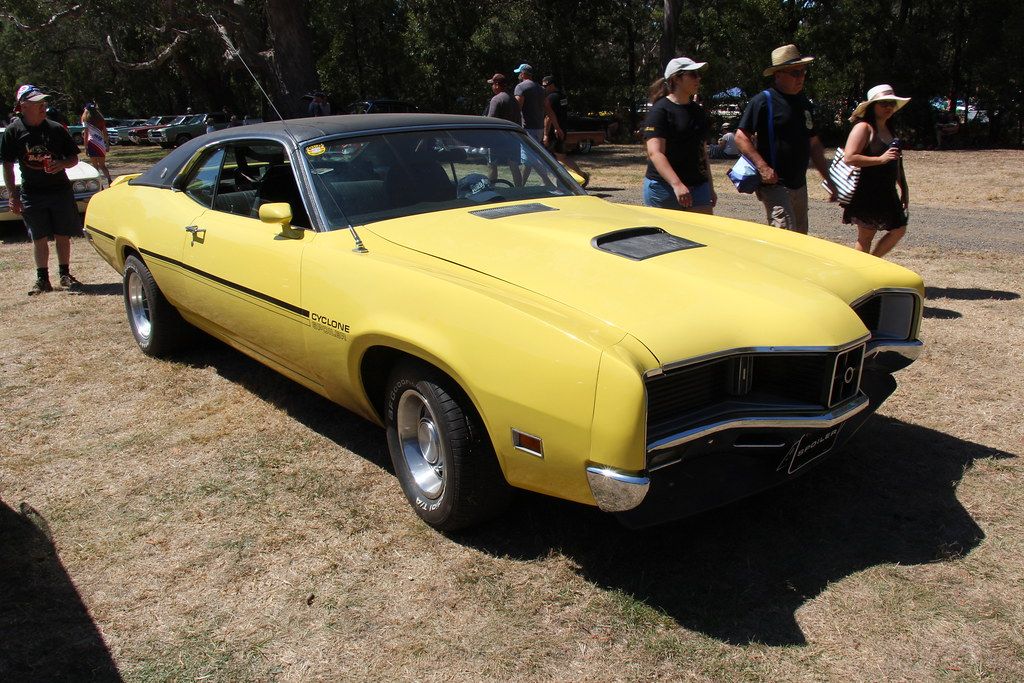
9. **1971 Mercury Cyclone Spoiler 429**The 1971 Mercury Cyclone Spoiler burst onto the scene with a blunt, unapologetic brashness, visually embodying a land-based missile but possessing road manners more akin to a gym bag filled with wrenches. Under its aggressive hood lurked the massive 429 cubic-inch (7.0L) Cobra Jet or Super Cobra Jet (SCJ) V8, rated up to 370 horsepower. This car wasn’t built for subtlety; it didn’t so much corner as it grudgingly reconsidered the very concept of directional change.
Modern drivers, who are deeply accustomed to the reassuring presence of computerized nannies and the precision of immediate feedback, would find themselves utterly flabbergasted by how little assistance this car provided. The driving experience was loud, crude, and significantly faster than its mediocre drum/front disc brakes were comfortable with, making deceleration an act of sheer bravery. The steering felt about as precise and helpful as attempting to guide a broomstick through a swimming pool—slow, incredibly heavy, and bordering on useless for anything beyond straight-line acceleration.
Compounding the challenge, the cockpit layout was notoriously unintuitive. A modern motorist might spend more time fumbling frantically for controls than actually engaging in the act of driving the damn thing, turning what should be an exciting journey into a frustrating search mission. Despite these challenges, the Cyclone Spoiler’s sheer presence and raw power made an undeniable entrance, even if handling it required the patience of a saint and the strength of a weightlifter.
Car Model Information: 1969 Mercury Cyclone COUPE
Name: Mercury (Comet) Cyclone
Caption: 1971 Mercury Cyclone GT
Manufacturer: Mercury (automobile)
ModelYears: 1964–1971
Class: Muscle car
Layout: FR layout
Predecessor: Mercury Comet
Successor: Mercury Cougar#Third generation (1974–1976)
Related: Mercury Comet,Ford Fairlane (Americas),Mercury Montego,Ford Torino Talladega
BodyStyle: coupe
Categories: 1970s cars, Articles with short description, Cars introduced in 1964, Commons category link from Wikidata, Coupés
Summary: The Mercury Cyclone is an automobile that was marketed by the Mercury division of Ford from 1964 to 1971. Introduced in 1964 as the Mercury Comet Cyclone, the Cyclone replaced the S-22 as the performance-oriented version of the Mercury Comet model line. The Cyclone became a distinct nameplate for the 1968 model year, as the Mercury Montego was phased in to replace the Comet.
Within Mercury, the Cyclone was positioned between the Cougar pony car and the Marquis/Marauder full-size two-doors. Though largely overshadowed by the Cougar, the Cyclone was positioned as a muscle car, representing the Mercury brand in racing as a clone of the Ford Fairlane Thunderbolt.
Four generations of the Cyclone were produced, with production ending after the 1971 model year. For the 1972 model year, the Cyclone returned as an option package for the Montego; only 30 examples were produced. Within the Mercury line, the Cyclone was not directly replaced. The Cougar XR7 was repackaged as a personal luxury version of the Montego for 1974.
Get more information about: Mercury Cyclone
Buying a high-performing used car >>>
Brand: Mercury Model: Cyclone
Price: $39,500 Mileage: 57,901 mi.
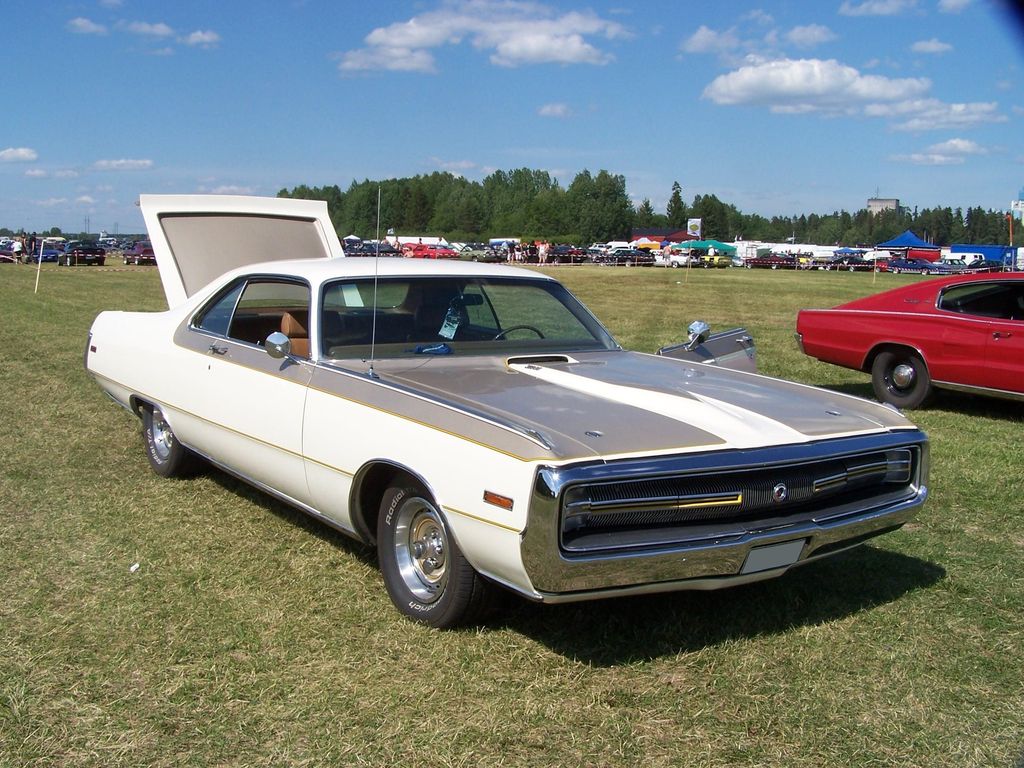
10. **1970 Chrysler 300 Hurst**A true colossal land yacht, the 1970 Chrysler 300 Hurst was marketed as the ultimate luxury muscle car, packing a mighty 440 cubic-inch (7.2L) TNT V8 rated at 375 horsepower. What it actually delivered was a unique blend of high-speed chaos wrapped in a surprisingly plush leather interior. Measuring nearly 19 feet long and weighing over 4,500 pounds, this behemoth handled with the grace of a queen-size mattress caught in a hurricane, offering a ride that was anything but precise.
Drivers today would likely recoil in sheer horror at its immense size, the overwhelming weight, and a fuel economy that seemed to be measured in gallons per mile rather than miles per gallon. Forget about lane departure warnings; this car, in its very essence, *was* the entire lane. Parking it demanded both an abundant amount of time and a desperate prayer, especially if anything resembling a curb was involved in the vicinity.
Adding to the list of challenges were the laughably small brakes, which felt as though they had been pilfered from a shopping cart. Slowing down this massive machine was less of a guaranteed feature and more of a theoretical suggestion, often requiring a significant lead time and a good deal of anticipation. Despite featuring Hurst branding and a formidable big-block engine, it was ultimately overlooked in muscle car circles due to its weight, cost, and personal luxury coupe aspirations, representing one of Chrysler’s last bold statements in big-block performance before the industry began to soften.
Car Model Information: 2022 Mazda CX-5 2.5 S Premium
Name: Chrysler 300 letter series
Caption: 1964 Chrysler 300-K Coupe
Class: Personal luxury car,Muscle car,Grand tourer
Manufacturer: Chrysler Corporation
Production: 1955–1965,1970
Assembly: Detroit,Michigan
Layout: Front-engine, rear-wheel-drive layout
Predecessor: Chrysler Saratoga
Successor: Chrysler 300 non-letter series
Categories: 1950s cars, 1960s cars, All Wikipedia articles written in American English, All articles containing potentially dated statements, All articles with unsourced statements
Summary: The Chrysler 300 “letter series” are high-performance personal luxury cars that were built by Chrysler in the U.S. from 1955 to 1965 and were a sub-model from the Chrysler New Yorker. After the initial year, which was named C-300 for its standard 300 hp (220 kW) 331 cu in (5.4 L) FirePower V8, the 1956 cars were designated 300B. Successive model years were given the next letter of the alphabet as a suffix (skipping “i”), reaching the 300L by 1965, after which the model sequence was discontinued while the “300” remained. At its introduction it was advertised as “America’s Most Powerful Car”.
The 300 “letter series” cars were among the vehicles built by Chrysler after World War II that focused on performance, and thus can be considered the beginning of the muscle car, though full-sized and more expensive. Chrysler had a long history of producing race car products going back to the Chrysler Six that was entered in the 1925 24 Hours of Le Mans, 1928 24 Hours of Le Mans, 1929 24 Hours of Le Mans, and the Chrysler Imperial Eight roadster in the 1931 24 Hours of Le Mans. The 1955 C-300 and the 1956 300B were raced with very little modification at NASCAR races to include Watkins Glen International where it won races multiple times.
The automaker reintroduced the 300 designations again for performance-luxury sedans in 1999, using the 300M nameplate from 1999 to 2004, and expanding the 300 series with a reintroduction of a new Hemi-engineered V8 installed in the 300C, the top model of a new Chrysler 300 line, a new rear-wheel drive car launched in 2004 for the 2005 model year.
Get more information about: Chrysler 300 letter series
Buying a high-performing used car >>>
Brand: Chrysler Model: 300 Hurst
Price: $25,680 Mileage: 32,780 mi.
Read more about: Untamed Beasts: The Most Outrageously Overpowered Muscle Cars That Pushed Street Limits
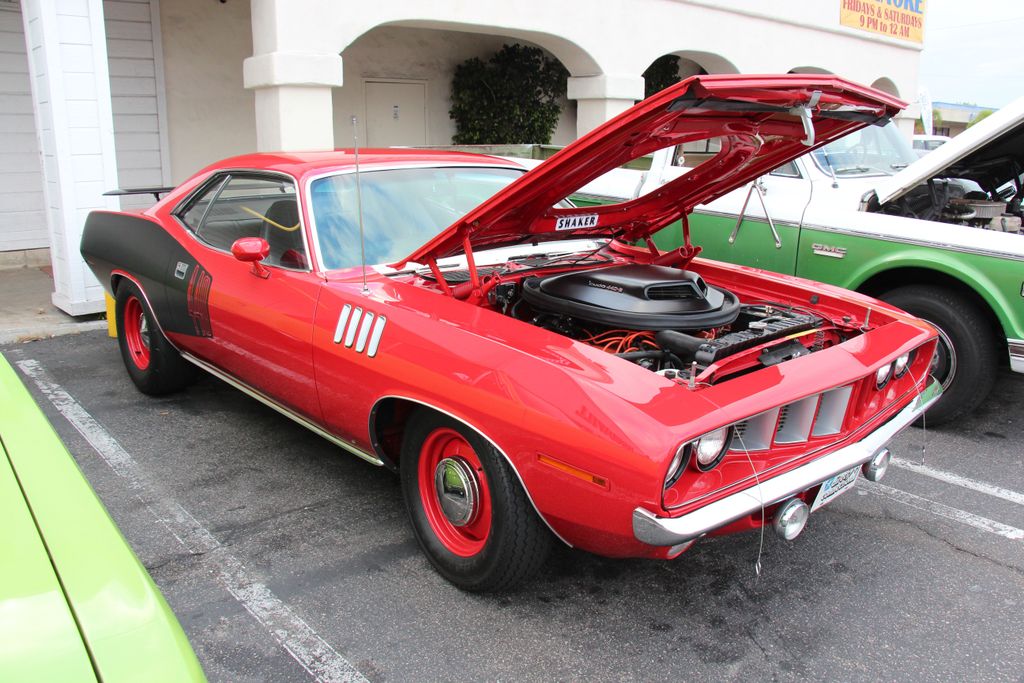
11. **1971 Plymouth GTX 440 Six Barrel**The 1971 Plymouth GTX 440 Six Barrel presented itself as a velvet hammer – a deceptive blend of sophisticated style on the outside masking a brutal, unrelenting force within. Its heart was the formidable 440 cubic-inch (7.2L) Six Barrel V8, which, thanks to three two-barrel carburetors, delivered instant and relentless acceleration, rated at a potent 385 horsepower. Yet, this formidable power was anything but refined in its delivery; the gearbox was clunky, prone to inconvenient vapor lock on hot days, and demanded precise, deliberate shifts from the driver.
Imagine trying to explain the concept of “vapor lock” to someone whose biggest mechanical concern is typically a dead phone battery – it’s a level of mechanical intimacy that today’s drivers are simply not prepared for. Anyone under the age of 40 would likely find themselves needing a deep tissue massage after just a few hours wrangling this beast through modern traffic, battling its notoriously heavy steering and stiff pedals. It was a true physical workout just to keep it pointed in the right direction.
And the noise level? Let’s just say that any attempt to make an emergency call to your chiropractor or even carry on a polite conversation would be entirely out of the question. You’d be screaming over the glorious, unadulterated roar of that triple-carb big-block engine, a sound that, while intoxicating for an enthusiast, would be overwhelming for the uninitiated, reminding them that this car was a visceral experience, not a quiet commute.
Car Model Information: 1971 Plymouth GTX
Name: Plymouth GTX
Manufacturer: Plymouth (automobile)
Production: 1966–1971 (44,178 units)
Class: Muscle car
Assembly: St. Louis, Missouri
Layout: FR layout
Platform: Chrysler B platform
Caption: 1970 Plymouth GTX
Categories: 1970s cars, All articles needing additional references, Articles needing additional references from February 2010, Articles with short description, Cars discontinued in 1971
Summary: The Plymouth GTX is an automobile introduced as the Belvedere GTX in 1967 by the Plymouth division. It was positioned as a mid-sized upscale-trimmed performance muscle car through the 1971 model year.
Get more information about: Plymouth GTX
Buying a high-performing used car >>>
Brand: Plymouth Model: GTX
Price: $45,000 Mileage: 84,281 mi.
Read more about: Beyond the Malaise: 15 Rare American Cars from the 1970s That Defied Expectations

12. **1970 Ford Torino Cobra 429 SCJ**Equipped with the potent 429 Super Cobra Jet engine, the 1970 Ford Torino Cobra was an undisputed threat on the street, but only if the driver possessed the skill and nerve to truly manage its raw power. This was a car with a mind of its own; its rear end seemed to step out with minimal provocation, ready to initiate a drift at the slightest hint of aggression. Furthermore, the gearing was notoriously ill-suited for city driving, transforming mundane commutes into a persistent chore.
Today’s drivers, accustomed to smooth, forgiving transmissions, would almost certainly fry the clutch in a week and find themselves constantly complaining about the heavy, demanding shifter. This was a car that didn’t just drive; it wanted to actively fight you at every stoplight, daring you to unleash its full potential. However, for those rare individuals who truly understood its language and knew how to wield its power, the reward was brutal straight-line speed and an adrenaline rush more intense than taking Red Bull intravenously.
While the 429 Cobra Jet was still a formidable option in 1971, offering Ram Air and a C6 automatic, the Torino GT often got overshadowed by its oversized styling. Sales plummeted after 1970, and Ford never fully committed to the GT trim’s performance identity. Despite this, the raw muscle was unequivocally still there, delivering an experience that was pure, unadulterated power, designed for those who sought a battle every time they got behind the wheel.
Car Model Information: 2024 Genesis GV70 2.5T AWD
Aka: Ford Fairlane (Venezuela)
Name: Ford Torino
Caption: 1970 Ford Torino Cobra SportsRoof
Manufacturer: Ford Motor Company
Production: 1968–1976
Class: Mid-size car,muscle car
Layout: FR layout
Related: Mercury Montego
Assembly: ubl
Predecessor: Ford Fairlane (Americas)
Successor: Ford LTD II
Categories: 1960s cars, 1970s cars, All Wikipedia articles written in American English, All articles with vague or ambiguous time, Articles with short description
Summary: The Ford Torino is an automobile that was produced by Ford for the North American market between 1968 and 1976. It was a competitor in the intermediate market segment and essentially a twin to the Mercury Montego line.
Just as the Ford LTD had been the upscale version of the Ford Galaxie, the Torino was initially an upscale variation of the intermediate-sized Ford Fairlane. In the 1968 and 1969 model years, the intermediate Ford line consisted of lower-trim Fairlanes and its subseries, the upper-trim Torino models. In 1970, Torino became the primary name for Ford’s intermediate, and the Fairlane was now a subseries of the Torino. In 1971, the Fairlane name was dropped altogether, and all Ford intermediates were called Torino.
Most Torinos were conventional cars, and generally the most popular models were the four-door sedans and two-door hardtops. However, Ford produced some high-performance “muscle car” versions of the Torino by fitting them with large powerful engines, such as the 428 cu in (7.0 L) and 429 cu in (7.0 L) “Cobra-Jet” engines. Ford also chose the Torino as the base for its NASCAR entrants, and it has a successful racing heritage.
Get more information about: Ford Torino
Buying a high-performing used car >>>
Brand: Ford Model: Torino Cobra
Price: $39,995 Mileage: 20,074 mi.
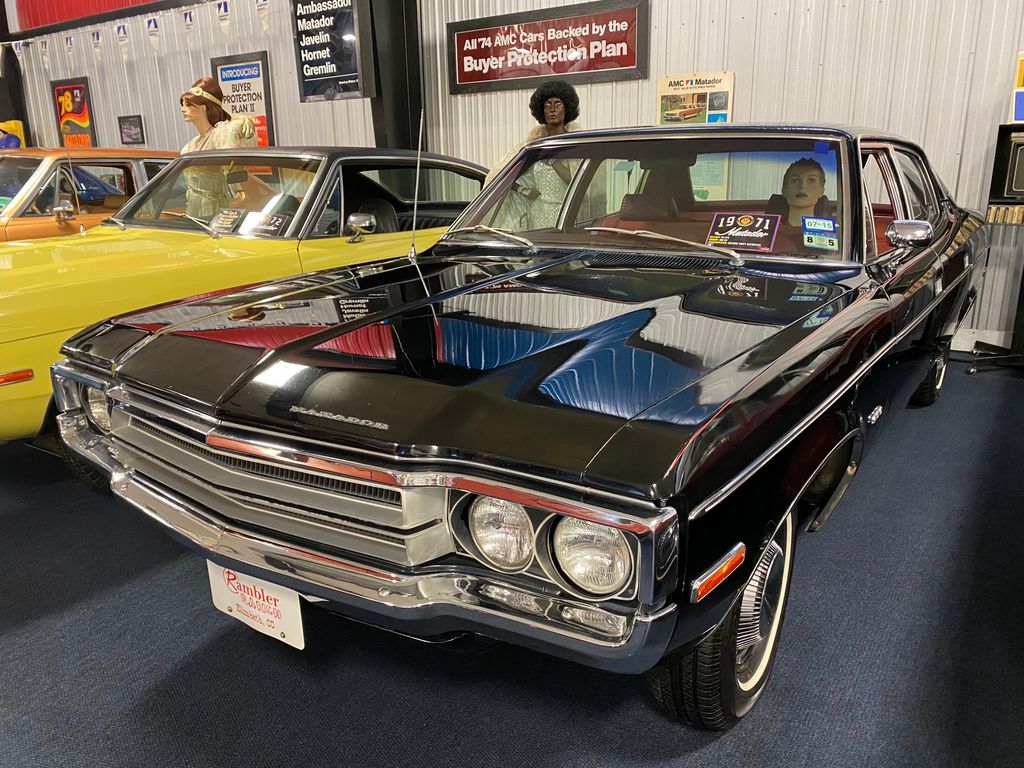
13. **1971 AMC Matador Machine**AMC’s legendary “Machine” package, known for its no-nonsense performance, didn’t disappear with the Rebel; for 1971, it was boldly transferred to the Matador, though regrettably, few people ever noticed its formidable presence. Only a mere handful of these cars were ever built with the optional 401 cubic-inch V8, which, despite putting out a healthy 330 horsepower through a beefy 4-barrel carburetor, somehow flew under the radar. It boasted all the quintessential muscle-car cues: aggressive stripes, functional scoops, and supportive bucket seats, yet it seemed to lack the right name or perhaps the necessary marketing push to gain widespread recognition.
The Matador Machine became an unfortunate casualty of AMC’s internal marketing shuffle and a crowded product lineup, finding itself overshadowed by the more prominent Javelin and AMX models. Without a robust brand campaign to highlight its raw capabilities, it quickly faded into obscurity, becoming one of the true forgotten gems of the era. For today’s average driver, not only would finding one be nearly impossible, but even if they did, they likely wouldn’t recognize it as the powerful, untamed beast it truly was.
Its inherent obscurity and unique-for-AMC ergonomics would add another layer of challenge for modern drivers. Accustomed to familiar layouts and widely recognized models, the Matador Machine would present an unknown quantity, a powerful but enigmatic brute that demands a re-learning of traditional muscle car driving without any digital safety nets. Its rarity makes it a fascinating historical footnote, but its raw nature would be a shock to anyone used to contemporary controls.
Read more about: Beyond the Malaise: 15 Rare American Cars from the 1970s That Defied Expectations
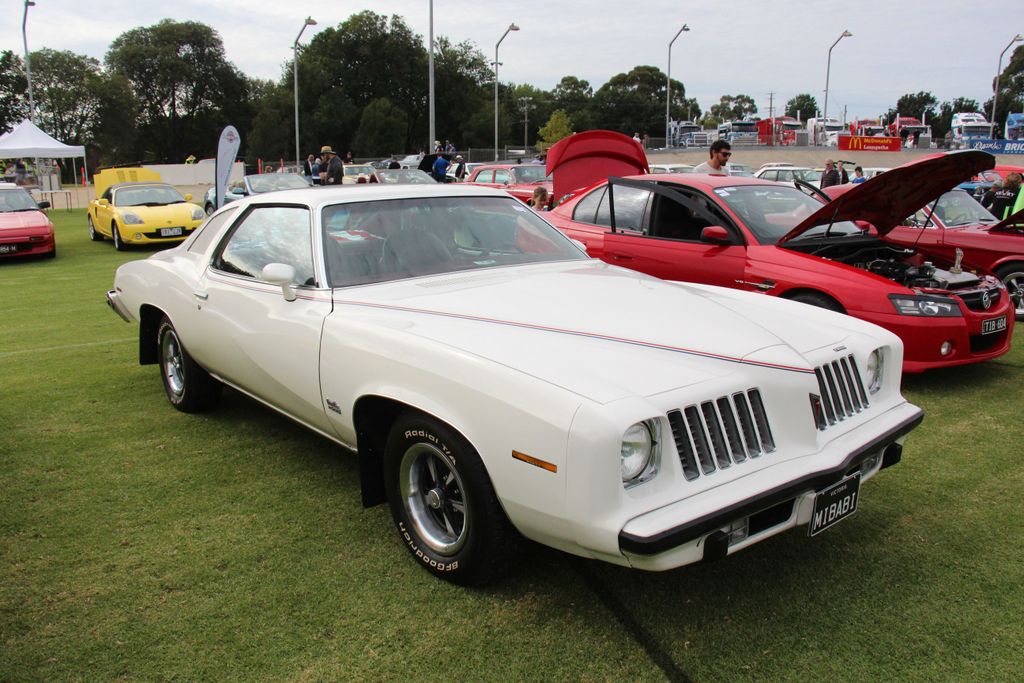
14. **1973 Pontiac Grand Am 455**Before the Pontiac Grand Am transitioned into its later, more sedate front-wheel-drive iterations, the 1973 model showed some genuine teeth, offering a powerful 455 HO V8 engine that delivered 250 net horsepower and an abundance of healthy torque. While it shared its sturdy Colonnade body with the LeMans, it also featured distinctive Euro-style touches, including a flexible nose and a more advanced strut-style front suspension, suggesting a blend of American brawn with European handling aspirations.
This car was envisioned by Pontiac to simultaneously challenge both precision-engineered BMWs and plush Buicks, an ambitious dual identity that ultimately proved to be its Achilles’ heel and a source of confusion for buyers. Pontiac’s marketing efforts, attempting to position it as both a luxury cruiser and a performance machine, diluted its appeal, leaving consumers unsure of its true purpose. This identity crisis, coupled with the rising costs of gas and insurance during the era, relegated the 455 Grand Am to an afterthought in the muscle car landscape.
For modern drivers, this dual personality would present a unique challenge. Expecting the precision of a sport sedan or the effortless comfort of a luxury cruiser, they would instead encounter a heavy, powerful car with a suspension and steering feel that defied easy categorization. It was a powerful brute trying to be something it wasn’t quite designed for, and navigating that inherent conflict in a world of refined automobiles would certainly make today’s drivers question what they’d gotten themselves into.
Car Model Information: 2022 Mazda CX-5 2.5 S Premium
Name: Pontiac Grand Am
Manufacturer: Pontiac (automobile)
Production: 1973–1975,1977–1980,1984–2005
BodyStyle: fastback,notchback,fastback,notchback
Predecessor: Pontiac LeMans,Pontiac Phoenix,Pontiac Tempest#Third generation 1987–1991
Successor: Pontiac G6
Categories: 1980s cars, 1990s cars, 2000s cars, All articles with dead external links, Articles with dead external links from May 2016
Summary: The Pontiac Grand Am is a car model that Pontiac Division of General Motors produced in various years between 1973 and 2005. The first and second generations were RWD mid-size cars built on the LeMans GM A platform. The Grand Am name was reused for a FWD compact car for the third- and fourth-generations. The fifth-generation versions was enlarged to a mid-size car.
The platform began development intended to be the next generation GTO, but the muscle car era was drawing to a close. Pontiac decided to make this model America’s answer to European luxury sports sedans. The Grand Am name was derived from two other Pontiacs; “Grand” signifying Grand Prix luxury, and “Am” for Trans Am performance.
The first generation Grand Am featured innovations that included a deformable urethane nose (an evolution of the “Endura” bumper pioneered on the 1968 GTO) and was one of only three GM cars (Olds Cutlass Salon, Chevy Monte Carlo S) to debut radial-ply tires (RTS – Radial Tuned Suspension) as standard equipment. The intermediate sized Grand Am was canceled in 1980 when it was replaced by the Pontiac 6000.
A compact-sized Grand Am, based on the GM N-platform, was released in 1985, replacing the Pontiac Phoenix. It became Pontiac’s best selling car and was later replaced by the Pontiac G6, so named as it was intended to be the 6th generation of the Grand Am.
All 1973 through 1975 Grand Ams were built in Pontiac, Michigan at Pontiac’s main assembly plant. The 1978-1980 Grand Ams were built in Pontiac, Michigan at Pontiac’s main assembly plant and in Atlanta, Georgia at GMAD Lakewood. All Grand Ams between 1985 and 2005 were built in Lansing, Michigan at the Lansing Car Assembly.
Get more information about: Pontiac Grand Am
Buying a high-performing used car >>>
Brand: Pontiac Model: Grand Am
Price: $25,680 Mileage: 32,780 mi.
Read more about: Unearthing the Gems: 14 Rare Cars of the 1970s That Defined an Era of Power and Panache
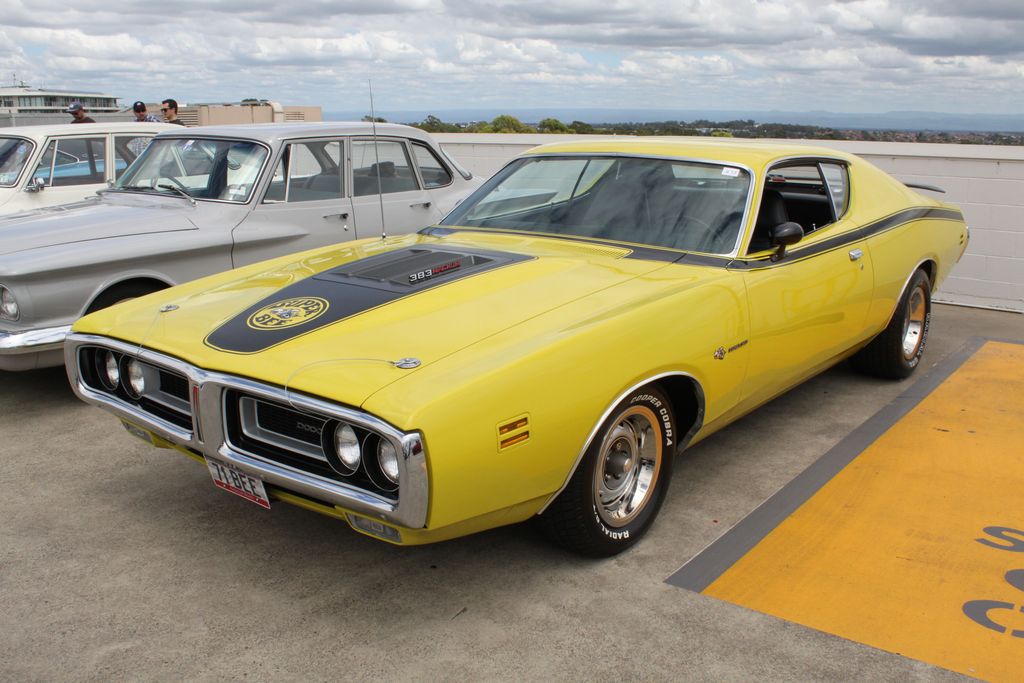
15. **1971 Dodge Charger Super Bee**In 1971, the iconic Super Bee name, synonymous with no-frills performance, migrated from the Coronet to the Charger chassis. While the magic of widespread sales didn’t follow with the nameplate’s move, the Super Bee could still be optioned with truly formidable powertrains, including the legendary 440 Six Pack or even the mythical HEMI engine, though most buyers gravitated towards the standard 383 Magnum. It clearly possessed the underlying muscle car goods, but in its new iteration, it felt more like a trim level than a distinct performance flagship, contributing to its declining sales.
By 1972, the Super Bee had unfortunately met its end, as Dodge began to pivot towards more luxury-oriented trims and special editions. The 1971 Super Bee, despite its short-lived run, undeniably had the heart of a true muscle car, even if it struggled to find a unique identity within a lineup that was increasingly prioritizing style over raw speed. Its powerful engine options meant it could still be a handful for even experienced drivers of the time.
For today’s drivers, getting behind the wheel of a Super Bee, particularly one equipped with a 440 Six Pack or Hemi, would be a stark reminder of muscle car brutality. The sheer torque, combined with the lack of modern stability controls and its inherent bulk, would make it a challenging, thrilling, and potentially terrifying experience. It’s a testament to an era where the driver was truly in command, for better or worse, making it a demanding but ultimately rewarding machine for those brave enough to pilot it.
These 1970s muscle cars represent more than just powerful engines and aggressive styling; they are a visceral connection to an era where driving was an unfiltered, hands-on experience, often demanding immense skill and unwavering attention. From the Oldsmobile 442 W-30’s deceptive balance to the Charger Super Bee’s undeniable muscle car heart, each one offers a unique narrative of power, quirkiness, and the sheer challenge of taming a true beast of the road.
Car Model Information: 2022 Mazda CX-5 2.5 S Premium
Name: Dodge Super Bee
Manufacturer: Chrysler Corporation
Production: 1968–1971 , 1970–1980 (Mexico only) , 2007–2009 , 2012–2013
Layout: FR layout
Class: Muscle car
Caption: 1969 Dodge Coronet Super Bee A12 “Six Pack”
Categories: 1960s cars, 1970s cars, All articles needing additional references, All articles with dead external links, All articles with unsourced statements
Summary: The Dodge Super Bee is a mid-sized muscle car marketed by Dodge, that was produced for the 1968 through 1971 model years.
In Mexico, the Super Bee was based on a compact-sized Chrysler platform and marketed from 1970 until 1980.
The Super Bee model name was resurrected for the 2007, 2008, 2009, 2012, and 2013 Dodge Charger Super Bee models.
Get more information about: Dodge Super Bee
Buying a high-performing used car >>>
Brand: Dodge Model: Charger Super Bee
Price: $25,680 Mileage: 32,780 mi.
Read more about: Unleash the Roar: 14 Badass Golden Era Muscle Cars You Can Still Own Without Breaking the Bank
In a world filled with autonomous features, digital interfaces, and silent electric propulsion, these machines scream their defiance. They remind us that performance doesn’t always come with comfort or convenience. They stand as glorious, loud, and unruly monuments to a time when cars had soul, a raw mechanical charisma that vibrated through your very core. While they might leave today’s coddled drivers crying into their oat milk lattes, these cars also make a compelling argument: mastering such a beast is not just about driving; it’s about becoming one with the machine, pushing boundaries, and truly earning every mile. It’s a feeling that’s increasingly rare, and undeniably unforgettable.

